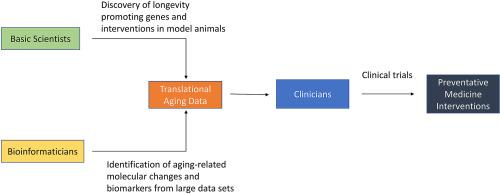Computational tools for geroscience
Abstract
The rapid progress of the past three decades has led the geroscience field near a point where human interventions in aging are plausible. Advances across scientific areas, such as high throughput “-omics” approaches, have led to an exponentially increasing quantity of data available for biogerontologists. To best translate the lifespan and healthspan extending interventions discovered by basic scientists into preventative medicine, it is imperative that the current data are comprehensively utilized to generate testable hypotheses about translational interventions. Building a translational pipeline for geroscience will require both systematic efforts to identify interventions that extend healthspan across taxa and diagnostics that can identify patients who may benefit from interventions prior to the onset of an age-related morbidity. Databases and computational tools that organize and analyze both the wealth of information available on basic biogerontology research and clinical data on aging populations will be critical in developing such a pipeline. Here, we review the current landscape of databases and computational resources available for translational aging research. We discuss key platforms and tools available for aging research, with a focus on how each tool can be used in concert with hypothesis driven experiments to move closer to human interventions in aging.


 求助内容:
求助内容: 应助结果提醒方式:
应助结果提醒方式:


